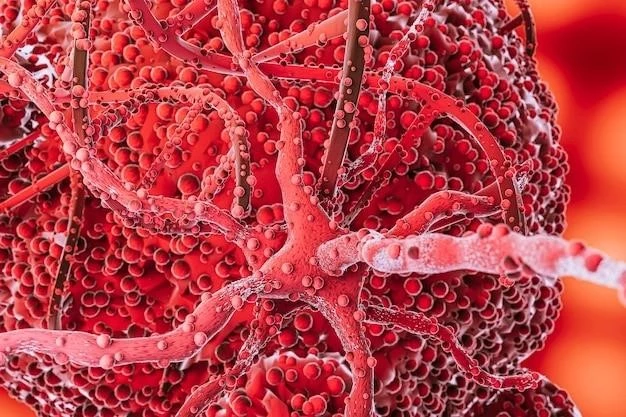When discussing symptoms and diagnosis of Acute Myeloblastic Leukemia‚ it is crucial to understand the various treatment options available. Knowing the causes helps in coping strategies. Stay informed about the latest research and developments. Parents should educate themselves on how this type of leukemia affects children. Supportive care and lifestyle changes are key for managing the condition.
Symptoms and Diagnosis of Acute Myeloblastic Leukemia
Acute Myeloblastic Leukemia presents various symptoms that warrant attention. Patients may experience fatigue‚ frequent infections‚ easy bruising or bleeding‚ shortness of breath‚ and bone pain. If you notice these symptoms persisting‚ it is crucial to seek medical evaluation promptly. The diagnosis often involves blood tests‚ bone marrow sampling‚ and genetic tests to confirm the presence of leukemia cells. It is essential for healthcare professionals to accurately diagnose the type and subtype of leukemia to determine the most effective treatment plan.
Treatment Options for Acute Myeloblastic Leukemia
Upon the diagnosis of Acute Myeloblastic Leukemia‚ treatment decisions are critical. The primary treatment for AML typically involves chemotherapy. Chemotherapy aims to eradicate leukemia cells and allow healthy blood cells to regenerate. In some cases‚ a stem cell transplant may be recommended‚ especially for younger patients or those with high-risk AML. Targeted therapy and immunotherapy are also emerging as effective treatment options for certain subtypes of AML. It is essential to discuss treatment goals‚ potential side effects‚ and long-term effects with your healthcare team to make informed decisions.
Understanding the Causes of Acute Myeloblastic Leukemia

Acute Myeloblastic Leukemia is a complex disease with various factors contributing to its development. While the exact causes may not always be clear‚ certain risk factors are associated with AML. These include exposure to certain chemicals like benzene‚ previous chemotherapy or radiation therapy for other cancers‚ genetic predisposition‚ smoking‚ and certain blood disorders. Understanding these risk factors can help in prevention strategies and early detection. It’s important to discuss any known risk factors with your healthcare provider to tailor your care accordingly.
Coping Strategies for Patients with Acute Myeloblastic Leukemia
Dealing with Acute Myeloblastic Leukemia can be emotionally and physically challenging. Coping strategies can help you navigate this journey. Surround yourself with a support system of family and friends who can provide comfort and assistance. Consider joining a support group with individuals facing similar challenges. Engage in relaxation techniques like meditation or yoga to reduce stress. Maintain open communication with your healthcare team to address any concerns. Remember to prioritize self-care and focus on activities that bring you joy and relaxation.
Latest Research and Developments in Acute Myeloblastic Leukemia
Staying informed about the latest research and developments in Acute Myeloblastic Leukemia is crucial for both patients and healthcare providers. Advances in targeted therapies‚ immunotherapies‚ and personalized medicine are shaping the future of AML treatment. Clinical trials play a significant role in testing new therapies and improving outcomes. It’s important to discuss with your healthcare team if you are eligible for any clinical trials. Regularly reviewing scientific literature and attending educational events can also enhance your understanding of the evolving landscape of AML treatment.
Acute Myeloblastic Leukemia in Children⁚ What You Need to Know
When Acute Myeloblastic Leukemia affects children‚ the approach to treatment and care may differ from adult cases. Pediatric AML is rare but requires specialized care from healthcare providers experienced in treating childhood leukemia. The treatment protocols for children are tailored to their age‚ weight‚ and overall health. Parents should understand the potential side effects of treatment and engage in open communication with the healthcare team. Emotional support for both the child and family is essential throughout the treatment process. It’s important to seek care from a pediatric oncology team with expertise in managing childhood AML.
Supportive Care for Acute Myeloblastic Leukemia Patients
Supportive care plays a vital role in the overall well-being of Acute Myeloblastic Leukemia patients. Managing symptoms such as fatigue‚ nausea‚ and pain is essential to improve quality of life during treatment. Adequate nutrition is crucial to maintain strength and support the immune system. Emotional support through counseling or support groups can help patients and their loved ones cope with the emotional impact of the diagnosis. Regular communication with the healthcare team is important to address any concerns or side effects that may arise. Palliative care services can also provide comfort and symptom management to enhance the patient’s comfort.
Lifestyle Changes to Manage Acute Myeloblastic Leukemia
Adopting certain lifestyle changes can complement medical treatment in managing Acute Myeloblastic Leukemia. Maintaining a well-balanced diet rich in fruits‚ vegetables‚ whole grains‚ and lean proteins can support overall health and aid in recovery. Staying hydrated and engaging in regular physical activity (as recommended by your healthcare team) can boost energy levels and maintain strength. Getting an adequate amount of rest and practicing stress-reducing activities like yoga or meditation can improve well-being. Avoiding exposure to harmful chemicals and quitting smoking‚ if applicable‚ can also contribute to a healthier lifestyle while dealing with AML.
